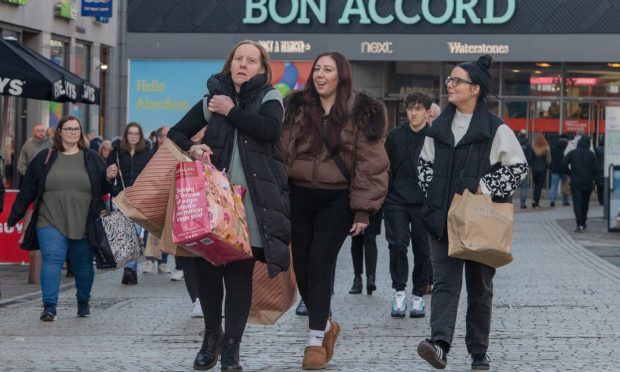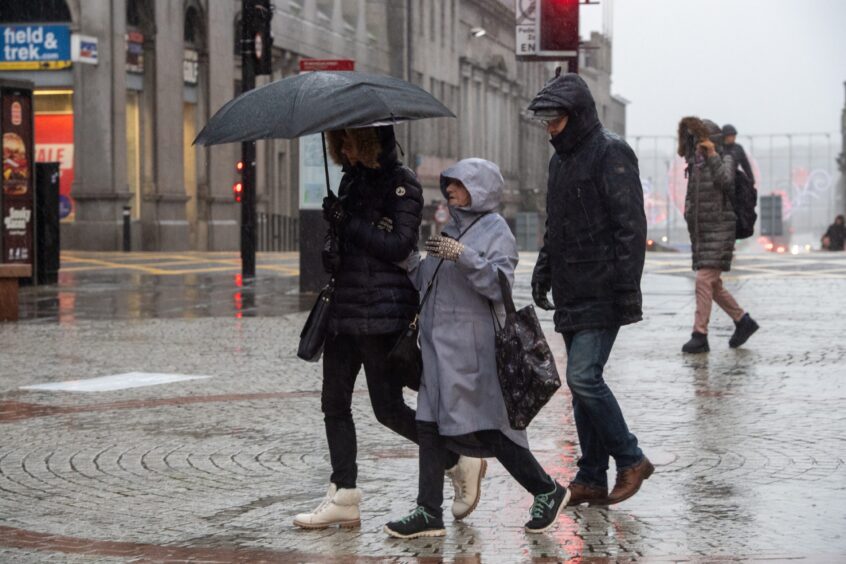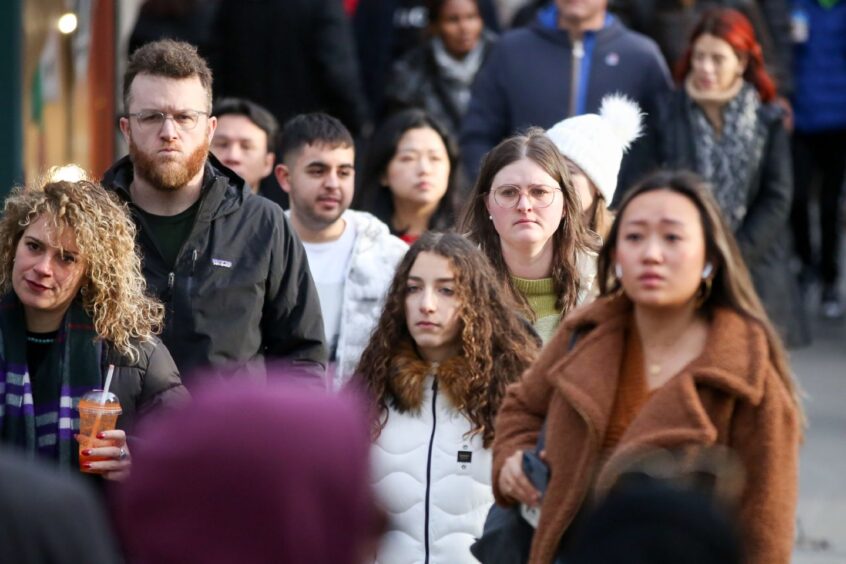The past year has been a period of upheaval for Scottish retailers and the customers they serve.
It’s been a continuation of the “perma-crisis” of recent years.
Scotland’s largest private sector employer hasn’t had its challenges to seek.
Consumer spending has been in a funk, impacted by elevated levels of inflation and rising mortgage rates.
Meanwhile, retailers have continued to be the focus of myriad government tax and regulatory interventions.
Added to this has been a spike in crime, particularly shoplifting and abuse of store workers. This comes despite better legal protections and record spending by shops on crime prevention.
Scottish retailers still struggling
Thankfully, some of the economic impacts of the global and geopolitical turbulence of recent years, such as Covid and the Ukraine conflict, have receded.
But the effects are still being felt. This can be seen in the prevalence of working from home, which has held back a full recovery in shopper footfall.
It can also be seen in elevated inflation, albeit shop price inflation has fallen markedly.
As such, Scotland’s shopper footfall and consumer spending has struggled.
Foot-traffic to retail destinations remains a sixth down on pre-pandemic levels.
The number of empty shops is a fifth above that prior to Covid and retail sales growth has been outpaced by rising prices for most of the second half of this year.
Consumers, however, have benefitted from fierce competition within the retail sector for shoppers’ custom, as well as easing commodity prices. This has helped lower shop price inflation but taken its toll on retailers’ profitability.
‘Trying’ public policy
In practice, consumers are spending slightly more money for fewer items which is squeezing retailers.
This has come against an at times trying public policy backdrop. The deposit return scheme farrago cost retailers tens of millions of pounds. Meanwhile, paused initiatives are set to reappear in 2024. These include proposed in-store restrictions on the marketing of alcohol, and possible curbs on the selling of products high in saturated fat, salt and sugar.
“Public policy change has been to the fore in 2023 notably with the fresh leadership at the top of the Scottish Government. This included a welcome rethink of some regulatory measures and a hoped for reset of the administration’s approach to how it involves business in policy development. On the latter the jury is still out.
“In 2024 the prospects for consumer confidence and spending will be critical. Employment levels remain high and wage growth is finally outpacing inflation, albeit higher mortgages are a drag on spending. The cut in employee national insurance contributions ought to help.
‘Sticky’ time ahead for Scottish retailers
The early months’ of the new year is a traditionally sticky period when retailers’ revenues reduce yet bills still need paid. Bumper increases in statutory costs such as on wages and business rates are in the pipeline.
This will increase the cost of maintaining a store footprint and serve to make things trickier. Given all of this it’s possible some well-known brands may falter or a question mark might be placed over the viability of some stores.
Of keen interest to the industry in 2024 will be the outcome of the UK general-election and how it impacts economic growth. In the politically charged months ahead there needs to be a thorough debate about how the next government will help lift the country’s rate of economic expansion and prosperity, compared to the mediocre levels of recent years.
The early omens for a contest focused on lifting economic growth seem favourable, albeit whether the parties can truly wean themselves off the instinct to regulate and tax remains to be seen.
Holyrood will mark 25 years of devolution in 2024. MSPs have a real stake in ensuring a flourishing retail industry and this should be the prism through which to look when considering new policies.
Surtax? No thanks
However, a worrying ad-hoc and piecemeal approach towards policy-making has crept in. The unexpected and alarming consideration being given to a new business rates surtax on grocery retailers is but the latest example. This arbitrary new levy risks making business rates more expensive, more complex and less predictable.
It comes on top of new levies including for workplace parking.
Too often, these take little account of what they may mean for household disposable incomes or the businesses affected.
Director of the SRC, David Lonsdale, reacts to today’s Scottish budget:https://t.co/vu6TY99o09
— The British Retail Consortium (@the_brc) December 19, 2023
A more coherent and rounded approach will be needed as ministers and councils continue talks aimed at devolving greater tax powers to local government, but which business has yet to be invited to be part of.
The past year has been one of ups and downs for retail and the industry is hoping for less of a white-knuckle ride over the coming 12 months.
Despite the headwinds, there are grounds for cautious optimism.
Next summer’s major sporting events, including the Olympics and European football championships, should provide a welcome fillip to retail.
Scotland’s qualification for the latter should boost domestic sales of electrical goods, sportswear, and food and drink – hopefully, with something to celebrate.
Scotland retailers have proven themselves highly adaptable and are striving to become more customer-focused, productive and fit for the future, no matter what policies or global factors are thrown their way.
But they may need to call upon all of their muscle memory, agility and tenacity if they are to continue to help drive forward Scotland’s economy.
David Lonsdale is director of the Scottish Retail Consortium





Conversation